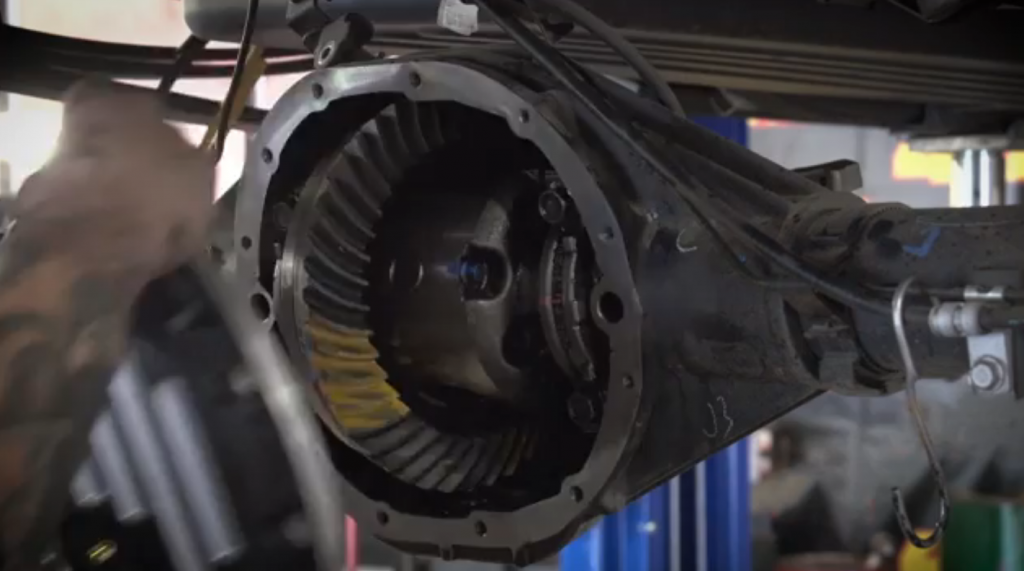
One of the first and most popular upgrades truck and Jeep owners do is installing larger wheels and tires. And while that may seem like a easy, straightforward affair, there are some side effects that could have a dramatic impact on drivability.
That’s because the vehicle’s ring-and-pinion gears were perfectly matched from the factory to the OE wheels and tire size. Changing the tire size (larger or smaller, mind you) skews the calculations, and you may not like the result.
Watch this quick, two-minute video from the gear gang over at G2 Axle & Gear. It’ll show you some common issues that arise from stepping up to larger wheels and tires, and how to correct them by simply re-gearing your truck or Jeep’s rear end.

So, 12 mpg from a modern truck that can’t haul anything unless you leave the tailgate open? Just one MORE reason for me NOT to buy a new “truck”! My 1977 GMC K-35 (454/TH400/3.73 ratio) gets 11 mpg no matter what I’m doing with it, has an 8′ bed and, best of all, is PAID FOR!
Yep and no check engine light. That is a real winner. Your catalytic converters if you still have one is to old to steal and because it is to heavy for the sorry sob to carry.
[…] One of the first and most popular upgrades truck and Jeep owners do is installing larger wheels and tires. And while that may seem like a easy, straightforward affair, there […] Read full article at http://www.onallcylinders.com […]
Do you need to change the front gearing too to accommodate the 4wheel?
Yes–While we cant speak for every vehicle’s setup, assuming you’ve got a traditional, selectable 4WD vehicle–the ratios should match.
but it’ll sure act funky when 4WD is engaged., both F&R gear sets need to be the same ratios, especially if equipped with AWD the automatic transfer case will make some noise before it destroys its self
You’re exactly right Don–I re-read my response and it was a bit vague–I tweaked it to offer a more direct answer. Thanks for the insight!
That video is not accurate on why. If you start with 32 tires and 3.42 ratio your rpm at 75 is 1936. Going to a 35 rpm lowers to 1770. Then going to 4.10 means 2122 at 75. That is a mpg loss. Flip side of the coin is acceleration. That is when regear is wanted and can still help mpg. If you stay with the 3.42 than your truck will struggle to get up to speed and be less fun. If it is struggling to get up to speed you’ll likely be pressing the throttle harder losing more mpg. Yes, It will be a loss versus stock on highway on the regear. With the regear you can accelerate faster with less throttle usage. This is where you can regain some mpg loss of the regear. Depending on how the truck is used will be the variable in if regear saves mpg. A truck with lots of highway may want that slow acceleration to get mpg and a city truck will improve mpg with regear.